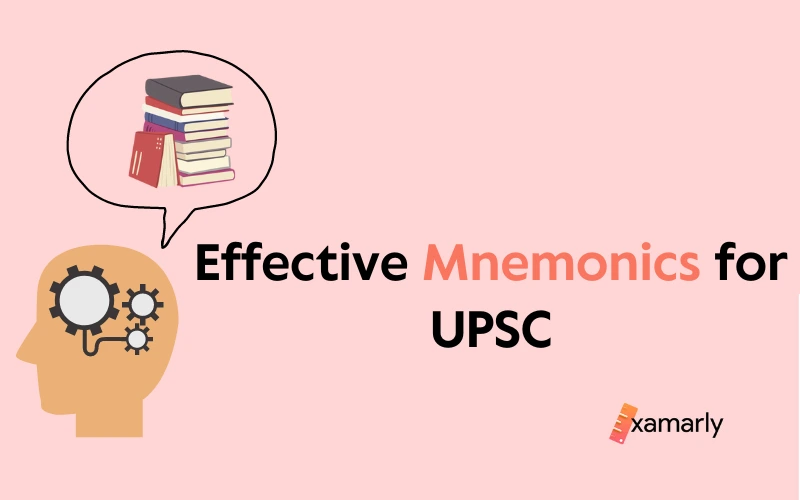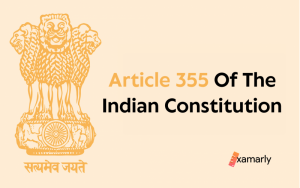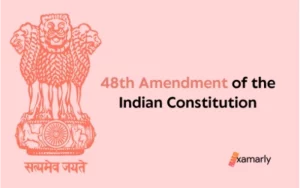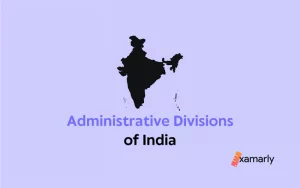Do you know that mnemonics for UPSC are extremely helpful for the aspirants’ exam preparation?
Preparing for the UPSC exam can be a daunting task, as it requires a deep understanding of a vast amount of information.
Mnemonics, or memory aids, can be an effective tool to help candidates remember key concepts, facts, and figures. By using creative and memorable associations, mnemonics can make it easier to recall information and boost retention.
In this way, mnemonics can be a valuable addition to any UPSC aspirant’s study strategy. In this article, we will explore the benefits of using mnemonics for UPSC preparation and provide some examples of effective mnemonic techniques.
- What is a Mnemonic?
- How Mnemonics Help in the UPSC Examination
- Memory Techniques for UPSC Exam
- Types of Memory Techniques
- The Model Mnemonics Technique
- Phrase Mnemonics Technique
- Rhyme Mnemonics Technique
- Music Mnemonics Technique
- Acronym Mnemonics Technique
- Note Organization Mnemonics Technique
- Image Mnemonics Technique
- Mnemonics for UPSC CSE
- 6+ Mnemonics Examples to Prepare for UPSC Examination
- 1. Choose information wisely
- 2. Be creative
- 3. Practice regularly
- 4. Use multiple techniques
- 5. Share Mnemonics with Others
- 6. Avoid over-reliance
- Useful Mnemonics for UPSC
- Countries Surrounding The Black Sea
- Countries Around The Caspian Sea
- Missiles Under Integrated Program
- Kings Of Ancient India Who Practiced Buddhism
- SAARC Countries
- 12 Schedules Of The Indian Constitution
- WRITS
- States Having Bicameral Legislature System
- Conclusion
- Frequently Asked Questions
- What are mnemonics for UPSC?
- How can mnemonics help in UPSC preparation?
- Can I use mnemonics for all subjects in the UPSC exam?
- Are there any tips for creating effective mnemonics for UPSC?
- How can I improve my retention of mnemonics for UPSC?
- Can I rely solely on mnemonics for UPSC preparation?
- What are some examples of effective mnemonics for UPSC?
What is a Mnemonic?
A mnemonic (pronounced as ni-mo-nik), also known as a memory aid, is an effective tool that helps us to remember any idea, a pattern of letters, any number, complex definitions, or any sort of association.
There are different ways to construct a mnemonic for UPSC. It all depends on your creativity and usefulness. It includes rhymes, poems, songs, native language, any gibberish language or can be anything easy to remember.
How Mnemonics Help in the UPSC Examination
Mnemonics can be an effective tool for UPSC aspirants to remember important information and concepts during the exam. Here are a few ways that mnemonics can help:
- Retention: By creating memorable associations, mnemonics can help candidates retain information for a longer period of time. This can be especially useful for recalling dates, names, and other factual details.
- Organization: Mnemonics can also help to organize information in a logical and meaningful way, making it easier to remember and apply during the exam.
- Time-saving: Mnemonics can help to save time during the exam, as candidates can recall information quickly and efficiently. This can be particularly important in the context of the UPSC exam, which has a time limit.
- Creativity: Mnemonics require creativity, which can be a fun and engaging way to approach studying for the UPSC exam. By using unique and personalized memory aids, candidates can make studying more enjoyable and memorable.
Also Read: All About UPSC Exam: A Comprehensive Guide
Memory Techniques for UPSC Exam
The examination requires memorization of facts and figures and that needs a Mind map.
Mnemonics for UPSC is a very useful tool to create a perfect mind map. It is a very effective way of structuring facts, information, or any figure for retention purposes.
Mnemonics enable us to see the overall structure in one go, and we can make associations between pieces of information.
- Revision: Such techniques are quite useful when the aspirants are revising for prelims or mains exams. Short forms, songs, or any other form of mnemonics help to go through the syllabus quickly.
- Connecting dots: There are times when aspirants forget half the content and can easily recall the remaining half. In such cases, the mnemonics technique helps to recall complete answers successfully.
Types of Memory Techniques
The Model Mnemonics Technique
Any kind of presentation is used to create in such a way that all the points of a particular topic are covered. It includes models, flow charts, bar charts, mind maps, etc.
Phrase Mnemonics Technique
A phrase is created using the first letter of every keyword and forms a song or a statement that can be recalled easily.
Rhyme Mnemonics Technique
Rhyming words are selected and a poem is created through those keywords which helps you to recall easily at the time of examination.
Music Mnemonics Technique
Sing your answers to remember them for a long duration. It is observed that most people can remember lyrics easily but not the text. So, give it some music and sing.
Acronym Mnemonics Technique
Creating an acronym or short forms by various methods is also a popular technique. It has a blurred image of the detailed keywords so recalling becomes easier during the exam.
Note Organization Mnemonics Technique
Every time one studies a particular topic, it is advised to note the important keywords in the Note section or highlight them. So at the revision time, one has to only go through the notes.
Image Mnemonics Technique
Images are easier to recall than text. So this technique is used where one can portray the text written and it will never go away from the memory.
Mnemonics for UPSC CSE
Mnemonics for UPSC is an effective memorizing tool to help Civil Services aspirants creatively retain large amounts of information.
It is a fact that UPSC CSE requires a strong memory and a very good retention power to recall certain facts and figures. A human being could easily design and assemble a machine but the truth is that a Human in itself is not a machine.
Therefore, it is not easy to remember and mug up everything an aspirant learns during the preparation for any examination.
6+ Mnemonics Examples to Prepare for UPSC Examination
UPSC CSE syllabus in itself is as vast as a sea. That’s why creativity is needed to remember such a large pool of facts, dates, figures, and various information which will help you in the IAS exam especially in the UPSC Prelims examination as it demands an objective approach and has MCQs as questions.
Here, we are going to present to you some important and useful mnemonics for UPSC which are popularly used among UPSC aspirants and will prove to be an effective tool for your UPSC Civil Services Examination.
Here are some easy and useful mnemonics for UPSC exam preparation
1. Choose information wisely
The UPSC exam covers a vast amount of information, and it can be challenging to decide what to focus on when using mnemonics for memorization.
It’s important to choose information wisely and focus on key concepts, dates, and names that are likely to appear on the exam. Here’s an example to illustrate this point:
One of the topics covered in the UPSC exam is Indian history. To prepare for this topic, an aspirant might use mnemonics to remember important dates and events.
However, it’s important to prioritize which dates and events to focus on, as trying to remember every single detail can be overwhelming and impractical.
For example, instead of trying to remember every single year of India’s struggle for independence, an aspirant might focus on a few key dates, such as August 15, 1947, which marks India’s independence from British rule, and January 30, 1948, which marks the assassination of Mahatma Gandhi.
By using mnemonics to remember these key dates, an aspirant can more easily recall them during the exam and demonstrate their knowledge of Indian history.
In summary, when using mnemonics for UPSC exam preparation, it’s important to prioritize which information to focus on and choose wisely based on the relevance and likelihood of appearing on the exam.
Also Read: 5+ Ways: How to Prepare for UPSC Exams Without Coaching
2. Be creative
Being creative when using mnemonics for UPSC exam preparation can make the memorization process more engaging and effective.
By using humor, vivid imagery, and personal connections, you can create mnemonics that are more memorable and easier to recall during the exam. Here’s an example to illustrate this point:
One of the topics covered in the UPSC exam is the Indian Constitution. To remember the Preamble of the Constitution, an aspirant might use the following acrostic: “WE the PEOPLE of INDIA, having solemnly resolved to CONSTITUTE India into a SOVEREIGN SOCIALIST SECULAR DEMOCRATIC REPUBLIC.” While this acrostic is useful, it may not be particularly engaging or memorable.
To make this mnemonic more creative, an aspirant might create a personal connection by associating each word in the Preamble with something familiar.
For example, “WE the PEOPLE” could be associated with a mental image of a group of people holding hands, “SOVEREIGN” could be associated with a crown, “SOCIALIST” could be associated with a red flag, “SECULAR” could be associated with a diverse group of people, and “DEMOCRATIC REPUBLIC” could be associated with an election or voting booth.
By using humour and vivid imagery, this mnemonic becomes more memorable and engaging. Instead of trying to remember a dry list of words, the aspirant now has a mental picture associated with each word, making it easier to recall during the exam.
In summary, being creative when using mnemonics for UPSC exam preparation can make the memorization process more engaging and effective.
By using humor, vivid imagery, and personal connections, aspirants can create mnemonics that are easier to recall and improve their chances of success on the exam.
3. Practice regularly
Practicing regularly is essential when using mnemonics for UPSC exam preparation. Mnemonics work best when they are repeated and reinforced over time. Here’s an example to illustrate this point:
Suppose an aspirant is preparing for the UPSC exam and is using mnemonics to remember the names of Indian states and their capitals.
The aspirant creates an acronym to remember the seven northeastern states and their capitals: “MANIPA (Manipur, Imphal), MEGAR (Meghalaya, Shillong), MIZO (Mizoram, Aizawl), NAGIT (Nagaland, Kohima), ARUNA (Arunachal Pradesh, Itanagar), ASSADI (Assam, Dispur), TRIPU (Tripura, Agartala).”
To ensure that they remember this mnemonic well, the aspirant needs to practice it regularly. They might repeat the mnemonic several times a day or write it out from memory. They might also create a quiz or flashcards to test their recall of the information.
Over time, with regular practice, the aspirant’s recall of the mnemonic will become more automatic, making it easier to remember the names of the states and their capitals during the exam.
Without regular practice, the mnemonic may be forgotten or not recalled as quickly, reducing its effectiveness in aiding memory retention during the exam.
Also Read: 7 Ways: Develop Critical Thinking for UPSC Exam Preparation
4. Use multiple techniques
Using multiple mnemonic techniques can help aspirants to remember a wide range of information for the UPSC exam.
Different techniques work better for different types of information, and experimenting with multiple techniques can help to find the ones that work best for individual aspirants. Here’s an example to illustrate this point:
Suppose an aspirant is preparing for the UPSC exam and needs to remember the names of different Indian dynasties and empires. The aspirant could use a variety of mnemonic techniques to remember this information, such as:
- Acronyms: An acronym is a word or phrase created from the first letter of each item in a list. For example, the aspirant could create the acronym “PG-M-MC-G” to remember the following dynasties: Pala, Gupta, Maurya, Mughal, Chola, and Gupta.
- Acrostics: An acrostic is a sentence where each word begins with the first letter of each item in a list. For example, the aspirant could use the sentence “Great Magicians Always Make Mighty Castles Glorious” to remember the following empires: Gupta, Maurya, Ashoka, Mughal, Chola, and Ghaznavid.
- Image association: This technique involves creating a mental image that links the name of the dynasty or empire with a visual image. For example, the aspirant could associate the Pala dynasty with a picture of a palace, the Maurya dynasty with a picture of a warrior on an elephant, and the Mughal empire with a picture of the Taj Mahal.
By using multiple techniques like acronyms, acrostics, and image association, aspirants can create a variety of memory aids to remember different types of information.
This approach also helps to keep the study material fresh and engaging, which can help to avoid burnout and increase the chances of success on the exam.
In summary, using multiple mnemonic techniques can help aspirants to remember a wide range of information for the UPSC exam.
By experimenting with different techniques, aspirants can find the ones that work best for them and create effective memory aids for different types of information.
5. Share Mnemonics with Others
Sharing your mnemonics with others can be beneficial for both yourself and others preparing for an exam. When you explain a mnemonic to someone else, you are reinforcing it in your own memory by revisiting the information and recalling it.
Additionally, by sharing your mnemonics with others, you are helping them to learn and remember the information more effectively.
For example, if you are preparing for the UPSC exam, you might use a mnemonic to remember the names of the Indian states that were formed after independence in 1947: PBHCM (Punjab, Bihar, Haryana, Chhattisgarh, Madhya Pradesh).
By sharing this mnemonic with others who are also preparing for the exam, you can reinforce the information in your own memory while also helping them to remember the names of these states.
This can be especially helpful for those who struggle to memorize information or who are overwhelmed by the amount of material they need to learn for the exam.
6. Avoid over-reliance
While mnemonics can be an effective tool for remembering information for the UPSC exam, it is important to avoid over-reliance on this technique.
Mnemonics work best when used in conjunction with other study methods to ensure a well-rounded understanding of the material. Here’s an example to illustrate this point:
Suppose an aspirant is preparing for the UPSC exam and is using mnemonics to remember key dates in Indian history. The aspirant has created a mnemonic to remember the date of India’s independence from British rule: “FLIP-15 (August 15), 1947.”
While this mnemonic can be effective in aiding memory recall, it is important that the aspirant not rely solely on this technique.
Instead, the aspirant should use mnemonics in combination with other study methods to ensure a well-rounded understanding of Indian history.
For example, the aspirant might also take notes on important events, read historical texts, and take practice tests to test their knowledge.
By combining different study methods, the aspirant can develop a more comprehensive understanding of Indian history, which can help them to better understand the context and significance of the dates they are trying to remember.
Using mnemonics as part of a well-rounded study plan can help to reinforce learning and make it more engaging, but over-reliance on mnemonics can limit an aspirant’s ability to understand and apply the material.
In summary, it is important to avoid over-reliance on mnemonics for UPSC exam preparation. While they can be an effective tool for remembering information, mnemonics should be used in conjunction with other study methods to ensure a well-rounded understanding of the material.
Combining different study methods can help to reinforce learning and make it more engaging, ultimately leading to better exam results.
Useful Mnemonics for UPSC
Countries Surrounding The Black Sea
Mnemonic: BURGRT
B– Bulgaria
U– Ukraine
R– Russia
G– Georgia
R– Romania
T– Turkey
Countries Around The Caspian Sea
Mnemonic: TRAIK
T– Turkmenistan
R– Russia
A– Azerbaijan
I– Iran
K– Kazakhstan
Horn Of Africa
Mnemonic: SEED
S– Somalia
E– Ethiopia
E– Eritrea
D– Djibouti
Missiles Under Integrated Program
Mnemonic: PATNA
P– Prithvi
A– Agni
T– Trishul
N– Nag
A– Akash
Kings Of Ancient India Who Practiced Buddhism
Mnemonic: BAPU KA HATH
B– Bimbisara
A– Ashoka
P– Prasanjeet
U– Udaysen
KA– Kanishka
HATH– Harshavardhana
SAARC Countries
Mnemonic: MBBS PAIN
M– Maldives
B– Bangla
B – Bhutan
S– Sri Lanka
P– Pakistan
A– Afghan
I– India
N– Nepal
12 Schedules Of The Indian Constitution
Mnemonic: TEARS OF OLD PM
T– Territories
E– Emoluments
A– Affirmations
R– Rajya Sabha
S– Scheduled Areas
O– Other Areas (North-Eastern areas)
F– Federal Structures
O– Official language
L– Land Reforms
D– Defection Laws
P– Panchayat
M– Municipalities
WRITS
Mnemonic: CPM HEADQUARTERS
C – Certiorari
P – Prohibition
M – Mandamus
H – Habeas Corpus
Q – Quo Warranto
States Having Bicameral Legislature System
Mnemonics: JAMBUK-T
J – Jammu & Kashmir
A – Andhra Pradesh
M – Maharashtra
B – Bihar
U – Uttar Pradesh
K – Karnataka
T – Telangana
Great Lakes Of North America
Mnemonic: HOMES
H – L.Huron
O – L.Ontario
M – L.Michigan
E – L.Erie
S – L.Superior
Adjoining Countries Bordering Arctic Sea
Mnemonic: Green Fish Went To Norway By Car
G – Greenland
F – Finland
I – Iceland
s – Sweden
N – Norway
C – Canada
A – Alaska
R – Russia
G20 Group
Mnemonic: Guru Ji Sita Ab SSC FCI Mein Jo Karti Hai
(Germany, USA, Russia, United Kingdom, Japan, India, Saudi Arabia, Indonesia, Turkey, Australia, Argentina, Brazil, South Africa, South Korea, Canada, France, China, Italy, Mexico, European Union)
You can construct more interesting mnemonic techniques for European Countries, Neighboring Countries, Arctic Council, Gulf Council, Nordic Council, Indian History, Ancient History, or Countries surrounded by the Baltic Sea, Caspian Sea, Adriatic Sea, Aral Sea, North Sea.
Many more countries by themselves by associating certain complex facts and figures with some creative words, songs, gibberish terms, or any other native language terms or words which they could easily remember.
Conclusion
The trick is to connect it to something you can easily remember – maybe the name of a friend or your favourite fruit. It is all a matter of organizing and creativity, and as long as it works to help you remember information, it’s great!
Mnemonics for UPSC are one of the most helpful tools while preparing. It makes revision as well as retention hassle-free.
Speaking of easing your UPSC preparation and improving memory retention, check out our Examarly app. Its specialized study plans are a surefire way to speed up and improve your UPSC exam preparation!
Frequently Asked Questions
What are mnemonics for UPSC?
Mnemonics are memory aids that use creative techniques to help remember information for the UPSC exam. Mnemonics include acronyms, acrostics, and image associations that can help recall important facts, dates, and concepts.
How can mnemonics help in UPSC preparation?
Mnemonics can help in UPSC preparation by aiding memory recall for important information. By using creative techniques to associate information with memorable cues, mnemonics can make it easier to remember key facts, dates, and concepts required for the UPSC exam.
Can I use mnemonics for all subjects in the UPSC exam?
Mnemonics can be used for all subjects in the UPSC exam, but they work better for memorizing specific facts and dates than for more abstract or conceptual material. It is important to choose information wisely and focus on key concepts, names, and dates that are likely to appear on the exam.
Are there any tips for creating effective mnemonics for UPSC?
Some tips for creating effective mnemonics for UPSC include being creative with associations, practising regularly, and using multiple techniques such as acronyms, acrostics, and image associations. It is also important to choose information wisely and avoid over-reliance on mnemonics.
How can I improve my retention of mnemonics for UPSC?
To improve the retention of mnemonics for UPSC, it is important to practice regularly, use multiple techniques, and choose information wisely. Additionally, repeating mnemonic associations regularly can help to reinforce memory recall.
Can I rely solely on mnemonics for UPSC preparation?
Mnemonics is a useful tool for UPSC preparation, but they should not be the only method of studying. It is important to use mnemonics in conjunction with other study methods, such as note-taking and practice tests, to ensure a well-rounded understanding of the material.
What are some examples of effective mnemonics for UPSC?
Examples of effective mnemonics for UPSC include “FLIP-15” to remember India’s independence date (August 15, 1947), “HOMES” to remember the Great Lakes (Huron, Ontario, Michigan, Erie, Superior), and “My Very Eager Mother Just Served Us Nine Pizzas” to remember the order of the planets in our solar system (Mercury, Venus, Earth, Mars, Jupiter, Saturn, Uranus, Neptune, Pluto).






